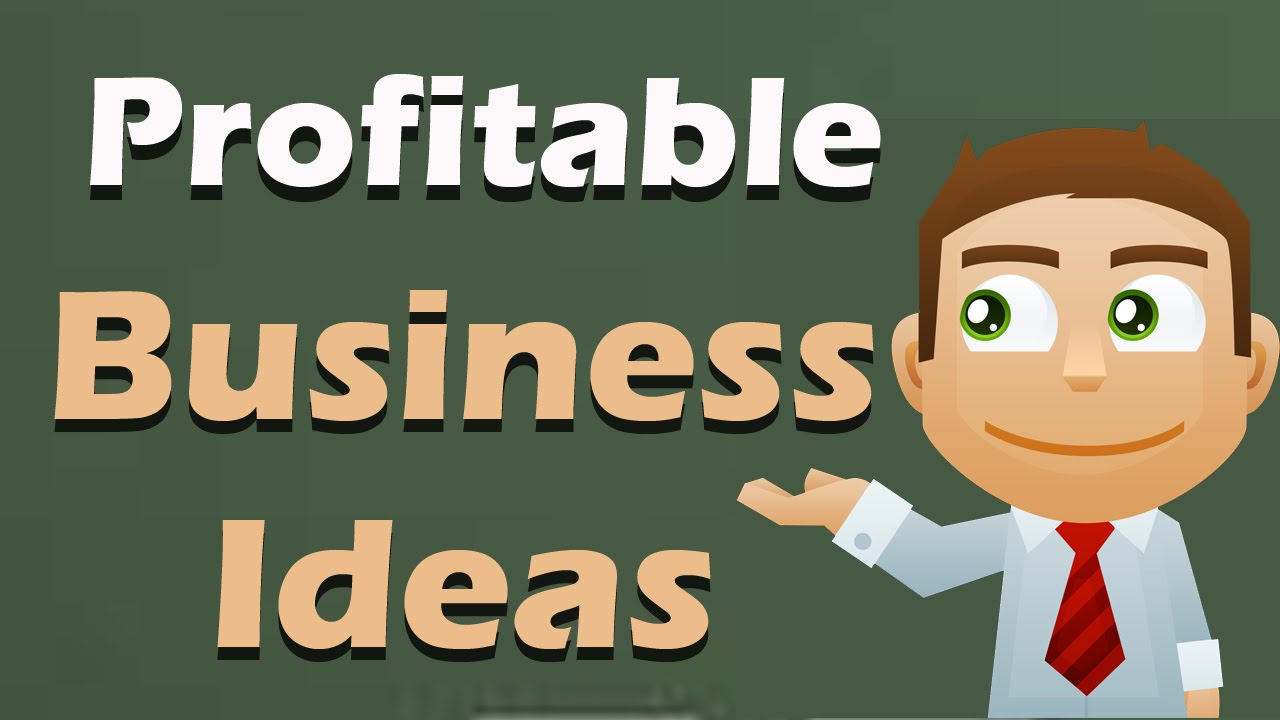3 Steps to Creating a Profitable Business Idea

3 Steps to Creating a Profitable Business Idea
Business Idea: Ideas can come to some people as easily as chewing gum on the sidewalk. Other people find it almost impossible.
I generate ideas all the time and often without trying, so it’s not just easy for me. Rather than being innately talented, I believe this to be a ‘skill’ that I have learned and honed throughout my life.
Even though most of this “learning” has been subconscious, I have made an effort to become more aware as I continue to run into more people who have trouble coming up with new ideas. In addition, the fact that research has become so popular about creativity and innovation certainly contributes.
The ability to come up with new ideas can be improved by anyone who practices enough and is aware of problems and needs.
A daily grind of working at a 9-5 job is undoubtedly more stressful and risky than seeking out great business ideas and becoming an entrepreneur. The sacrifices are greater.
As a self-employed person, you often find that once you become your boss, you make a significant amount more money. Your hard work will all be worth it if you succeed with your business ideas. Check out these 2022 business ideas.
Launching your blog is one of the easiest (and least expensive) business ideas you can begin right now.
Are you thinking of starting your own business but lack the cash or time to fund in developing technical skills? This list of simple business ideas for beginners might be just what you’re looking for.
All of these businesses can be started for very little money; some can even be started for nothing if you already have the tools. You can start a business quickly with every single one of these, tips-sometimes almost immediately. The majority of these businesses can be operated at home.
This type of business isn’t ideal for “get rich quick” schemes. An individual willing to work at these inexpensive, easy businesses can make a good living and also enjoy the satisfaction of being their boss.
I know this sounds absurd since you can right now search for “business ideas” on Google and get 52,800,000. (Want to be a dog walker?) Why then do people have such a hard time developing business ideas when business ideas are so readily available? It isn’t enough to have any idea.

You need to know:
- Determine whether your proposed business is beneficial (so you don’t waste your time).
- If your idea is important to you, anyone can throw you several suggestions and tell you, “Run with it.” Bye.”
But I take a different approach. I’ve created a strategy that ensures you’ll come up with profitable ideas you’ll appreciate.
If you do this right, you’ll be well enough on your way to running a profitable online business. One that allows you to pursue your passions while remaining financially secure. You might have been confused about saving for the future or paying current bills, or investing in wonderful experiences and products.
Don’t know what to do? Or do you have an overabundance of ideas?
Relax. I’ve got you taken care of.
1. The business idea shouldn’t be romanticized.
Among today’s entrepreneurs are those who strike it rich with an idea or product, make tons of money, take their companies public, and keep going back for more – a phenomenon known as “serial entrepreneurship.”
Being a member of the club of such successful men and women is fairly rare, but gaining access to their secrets and applying them to their situation is a powerful lure for those hoping to ride their coattails.
Your weekday starts without an alarm. You meditate for half an hour, then do bodyweight exercises for another half hour. Having breakfast before heading out to the office will enable you to tackle your to-do list the following day. There are some buttons to click, checks to sign, a phone call to take, and business is good!
In no time at all, it is 6:00 p.m., and you are heading out for drinks and dinner. There’s nothing like running your own business. I mean, if you make your own money, what’s not to love? There is no boss over you. You decide what to do with your time. You’re baffled as to why you didn’t make the transition from worker to businessman earlier.
Except this isn’t a case of entrepreneurship. It’s like something out of a fairy tale.
We have this foolish assumption that starting a business implies finally living a comfortable and free life. Wrong. Running your own business, like any respected career, comes with its own set of hurdles. You must consider how you will pay your employees’ salaries. You must go through archaic government procedures. You must seek out customers. You must choose between being paid and turning the lights on.
That’s just for Monday.
People who believe that starting a business is the fastest method to a comfortable lifestyle are delusional. I’ll go ahead and say it isn’t for everyone. You got that correctly. Entrepreneurship is not for everyone. To be successful at it, you need a certain amount of tenacity and a willingness to take risks. A business can be started by anyone. Everyone can’t make it work. That is the truth.
The figures aren’t encouraging either.
In business reality, it is not possible to love what you do and do what you love. The first step is to determine if your passion can be profitable by assessing the market demand. You might enjoy good coffee, and you may even understand its varieties. You might even have completed barista courses, and you may even have won championships.
In the city where you live, there is no shortage of coffee shops, and competition is ferocious. How do you know if people are going to come to your coffee shop if it is on a single street? Even if you don’t mind the money, time, and effort, you can start a business. But before you jump into business, make sure you ask yourself these questions:

- Why are you starting a business in the first place?
- Who is your customer?
- In terms of your business and personal goals, what are they?
- How can your business resolve the problems your customers have?
- How will your company differ from those of your competitors?
- How do you launch a business? What resources do you need?
2. Your competitors shouldn’t be underestimated.
Being aware of your competitor’s strengths and weaknesses is vital. It is common for small business owners not to conduct thorough research on their competitors because it appears dishonest – like peeking over your classmate’s shoulder to find out what he answered to the test. The purpose of this article is to provide you with a few tips to start your competitor research, as well as to provide three reasons why knowing your competitors is important.
What It Means To Know Your Competitors
Find out what your brand is really about
The majority of businesses will evaluate their market position based on only their numbers and customer feedback. However, you didn’t manage to see the whole picture unless you understood how you compare to your competitors.
What distinguishes them from the competition? What can you do to make your branding strategy out of the crowd?
Take notes on your competitors’ blunders.
The volume of information available online is one of the most significant advantages of digital marketing.
Whatever techniques your competitors have used in the past, there’s a good probability they’ve documented their ups and downs.
You can learn which methods to emulate and which to avoid by conducting competitor research.
Through your competitors, you can reach out to potential markets and customers.
Doesn’t it sound a little backward?
However, if you conduct a thorough competition analysis, you may be able to identify undiscovered markets that they are overlooking.
You can figure out what’s missing from the present market offerings by examining the input from their clients, not just yours.
Here’s a three-step method for analyzing the market:
- Primary research: Rather than imagining what the customer wants, you can simply ask them. To do this, use questionnaires, research, and interviews. If you already have consumers, you may learn about their preferences and behavior using data from email service reports, YouTube, Google Analytics, social media, and other platforms.
- Secondary research: Organize and study the information you’ve gathered. Is this accurate in your estimation of the market? What is the best way for your product to fulfill a customer’s request?
- SWOT analysis: A SWOT analysis is a proven method of analyzing an idea’s strengths, weaknesses, opportunities, and threats. You can determine whether the market requires service and how you will make the profit you predict based on the analysis. You may readily get blueprints for this technique on the web and examine them.
Here are the answers to these questions as a result of this research:
- In what ways do your customers sell, how much are they worth, and what are their limitations?
- Can you describe a few of your competitors and what their products are like or dislike to your potential customers?
- How could you become more successful if you proposed something to the market?
- Would you be able to provide a unique offer?
3. Test your hypothesis
The hypothesis is a claim, supposition, or assertion concerning the parameter’s value (mean, variance, median, etc.).
An educated assumption about it in the world with you is referred to as a hypothesis. It should be able to be put to the test, either through experiment or observation.
For example, let’s say we declare that “Dhoni is the best Indian captain ever.” We’re making this assumption based on the country’s overall wins and losses during his command. We can put this statement to the test using all of the match data.
After you’ve done your market research and figured out what your customers want, you’ll need to make sure your product satisfies their needs. Furthermore, this should be accomplished as inexpensively as feasible, in the form of an MVP (Minimum Viable Product).
The value of an MVP is that it allows you to build a new product for less money and gather customer feedback. Test A/B versions of web pages to see what kind of website version or design customers prefer. You can use this to validate your assumptions about future business. Using the same offer’s landing page, you can create two versions with different designs and block layouts but with the same price and text. Once you have analyzed which version consumers preferred and which generated the most qualified leads, you can adjust your marketing accordingly.
This way, your startup will not become a mere failure statistic, and you will not waste time and money seeking investments and teams.
You can identify new opportunities to pursue and threats to abate by becoming a more data-driven decision-maker. Your company can be more innovative and, ultimately, more profitable if you back your decisions with data rather than relying on subjective thinking.

HYPOTHESIS TESTING: KEY CONSIDERATIONS
- Alternative Hypothesis and Null Hypothesis
The alternative hypothesis is the hypothesis that is being investigated in hypothesis testing. It’s frequently expressed as a statistical relationship or correlation between variables. The null hypothesis, on either hand, is a claim that there is no statistical link between the variables being investigated. It’s usually the polar opposite of whatever the alternative hypothesis claims.
Consider a company’s executive team that sees $12 million in monthly income consistently. They want to know if lowering their service prices will attract more clients and, as a result, increase income.
As an alternative hypothesis, it could be stated like this: “We will increase sales by five percent if we lower our flagship service’s price by five percent. We expect to achieve revenues of more than $12 million within the next month.”
As a result, if the null hypothesis is true, revenues would not grow above the baseline of $12 million or maybe even decrease.
- Significance Level and P-Value
You are likely to come up with different results if you run the same scenario 100 times. If you plot these data in a country to determine, you’ll notice that the most probable result is at the top of the graph, with far less likely outcomes to the right and left of it.
Assume you’ve performed your hypothesis test and received your data, which indicates that the variables you were evaluating may correlate. To determine the significance of your results, you’ll need to calculate a p-value for the analysis, which indicates how sure you are in the results.
The p-value in statistics is the likelihood that, if the null hypothesis is right, you will still see findings that are at least as dramatic as your hypothesis test results. Your results are of greater significance if your p-value is small, as the alternative hypothesis is more likely to be true.
- One-Sided vs. Two-Sided Testing
It’s critical to use the proper testing procedure when it’s an opportunity to check your hypothesis. One-sided and two-sided tests, often known as one-tailed and two-tailed tests, are the two most popular hypothesis testing methods.
A one-sided test is typically used once you have a strong belief in the direction of shift you expect to see as a result of your hypothesis test. When you’re unsure about the direction of change, you will do a two-sided test.
- Sampling
A sample of data is required to perform hypothesis testing. In addition to surveys, observational studies, and experiments, you may also collect samples based on the question you are trying to answer or investigate. In a survey, a sample of the population is asked a series of questions, and their responses are recorded.
Researchers who conduct observational studies observe and collect data without intervening in the behavior of sample populations. Lastly, an experiment requires that a sample be divided into multiple groups, with one of those groups serving as a control group. Each variable is manipulated for each non-control group to determine how the data collection varies from the control group.
Where to look for problems?
Your personal life and experience
Entrepreneurs often get ideas for potential products or services by looking at their problems. Do you have had any negative experiences recently with buying? When you saw the prices and markups on wedding dresses (or anything wedding-related) while you were helping a friend prepare for her wedding, your jaw dropped. There must be a better option, you thought to yourself.
Ghada Eltanawy founded La Reina, an online dress-rental company, in 2017 to tackle this issue. La Reina offers women a more affordable alternative to expensive evening & wedding gowns.
Often, great ideas come from solving problems you have and finding out whether others have the same issues. Get started today.
Family and Friends
Seems to be the same conversation/problem recurring in your family or circle of friends with no apparent solution?
If members of your family or friends, for example, have trouble choosing a suitable dentist within a good range, this could be a sign that you should begin an application that allows people with competent dentists within a specified radius, complete with user ratings and booking features. Of course, this is a made-up example because this is how amazing ideas begin.
Employer and Business Sector
Another fantastic source of inspiration is recruitment agencies. For example, if you work in H.R. and your firm is consistently trying to locate quality candidates, recruiting companies in your field or industry may not have exposure to the talent you’re searching for. There might not be any local recruitment agencies that specialize in your industry, or there may not be any specialized talent in your area. If this is the case, it’s time to investigate further to determine if this could be a business opportunity.
Keep your eyes and ears open.
What are the people around you talking/complaining about, wherever you are? Where do they struggle? Keep a notepad or a phone in your pocket and write down the topics or problems that keep coming up. Keep reviewing your notes. Do you notice any patterns or themes emerging?
Try to understand problems you have trouble understanding
As a startup advisor, I am frequently asked, “What business should I start?” What are the most promising startups?
While it is true that certain industries grow at a faster rate than others, a concept is worthless if it isn’t executed well.
You, the entrepreneur, and your staff are just as, if not more, vital to the company’s success as the idea. An “OK” concept carried out successfully is significantly superior to a “great” idea carried out poorly.
That is why you should seek problems that you are familiar with, problems that you are enthusiastic about, and problems with which you have a personal friendship. The better you recognize the issue and the individuals who are affected by it, the ideal option you can offer.
Let’s say you’re a chef who happens to be a vegetarian. You’re always having trouble finding good vegetarian restaurants in your town or area. You’re also having trouble finding good steakhouses.
What do you think would be a better business concept for YOU? Is it better to open a vegan restaurant or a steakhouse? You’ll have to do the math.
Although digital marketing is a developing sector, it means nothing if you don’t know anything about it and have no talent or experience in the field. You won’t be able to be successful in that profession until you learn the industry and grasp it well enough to bring value to your customers.
Networks are good concepts.
The brain is mostly made up of neurons, which number in the billions. They constitute a neurological device that is able to make judgments, perceive our surroundings, and give commands to our system when they are connected.
The connections between neurons play an important role in how we think, what we think, and what we do. The human brain has the unique capability of rewiring connections and forming new ones, regardless of age. This property is called “plasticity” by neuroscientists.
We increasingly become more plastic in the brain as we have more experiences and we experience more changes in our behavior and surroundings. This means that new connections are formed more easily, and old connections can be rewired. Our bodies have a hard time controlling our actions and remembering information when we become older, when we do less and use our brains less.
Rather, we have simply stopped making new connections because our brain is no longer plastic. Those in the habit of making new connections will become better at creating them as their brain becomes more practiced. Your brain will be more effective at coming up with good ideas the more active you keep them.
A state of mind that is ideal for the generation of ideas.
A subject he has researched and written about for years is “Where Good Ideas Come From” by Steve Johnson. It is more likely that you will come up with good ideas when you:
- Various areas of exploration and experimentation are a part of you
- The idea of serendipitous encounters is of interest to you, and you are open to exploring it
- You make mistakes
- Developing an idea slowly, over time, allows it to grow
- Old inventions can be used in new ways
- Building on top of existing platforms
You will realize fairly soon if you read his book that your surroundings contribute to or limit your ability to think creatively.
“Creating new neural connections requires that you put yourself into environments that replicate the neural network of a mind exploring the boundaries of possible possibilities.” – Steve Johnson.
Innovation soared as humans built their first dense settlements. For the first time, humans formed settled communities numbering in the thousands with the invention of agriculture. This meant that far more connections could be made with more individuals and that a nice plan could swiftly spread and take root in the minds of others.
If you consider this as you work, live, and explore, you’ll quickly notice that it’s a lot pretty easy to come up with fresh ideas when you have a lot of them to begin with. This doesn’t have to occur in a metropolis, a university, or a crowded atmosphere; it may happen when you’re dealing with many people’s views online, in books, or through other means of communication. “Connection” is the key.
Edited and published by Ashlyn Joy




